Main menu
Common skin conditions

NEWS
Join DermNet PRO
Read more
Quick links
Follicular disorder Diagnosis and testing
Author: Dr Ahmed Sadek, Dermatologist, Cairo Hospital for Dermatology & Venereology (Al-Haud Al-Marsoud), Egypt (2022)
Contributors: Dr Dalia Hossam, Dr Radwa Magdy, Dr Nehal Saied, Dr Noha Hashem, Dr Safaa Yehia Negm, Dr Moshera Saied El Bahrawy, Dr Amira Ragab, Dr Amal Wagih, Dr Haidy El-Hussieny, Dr Mona Ragib, Dr Hala Amer (2022)
Edited by the DermNet content department
Introduction
Alopecia areata
Tinea capitis
Trichotillomania
Traction alopecia
Temporal triangular alopecia
Many scalp and hair disorders present with focal hairless patches which require meticulous examination to differentiate between cicatricial (scaring) and noncicatricial (non-scarring) alopecia and to identify their exact cause. Trichoscopy can be used as a non-invasive tool for rapid diagnosis of different types of alopecia.
Main causes of localised noncicatricial alopecia:
Refer to generalised noncicatricial hair loss for further information on the trichoscopy of alopecia areata.
Tinea capitis is a superficial fungal infection of the scalp commonly affecting children, however it may present in immunosuppressed adults. The disease is primarily caused by dermatophytes, Trichophyton and Microsporum genera, that cause endothrix or ectothrix type hair shaft infection respectively.
The clinical presentation is typically of a single or multiple patches of hair loss, sometimes with a black dot pattern, that may be accompanied by inflammation, scaling, pustules, and itching.
Specific features:
Comma and corkscrew hairs represent the bending of the affected hair shafts due to the invasion with fungal hyphae.

Dermoscopic image of tinea capitis presenting with comma hairs
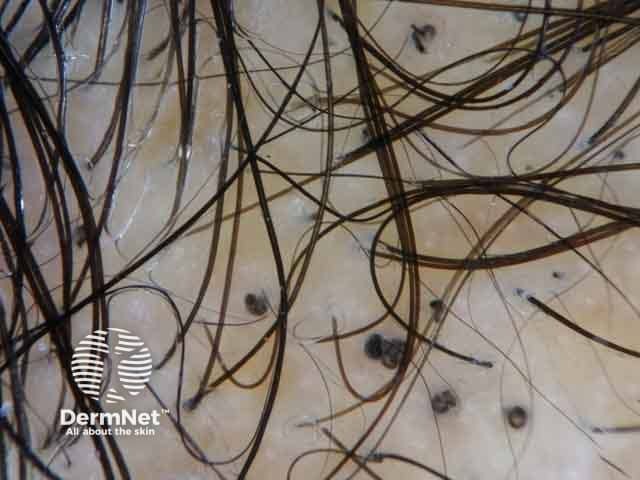
Dermoscopic image of tinea capitis presenting with corkscrew hairs

Dermoscopic image showing comma hair (white circles) zigzag hair (black arrows) and morse-code hair (red arrows) denoting tinea capitis (TC-patient1)
Other features:
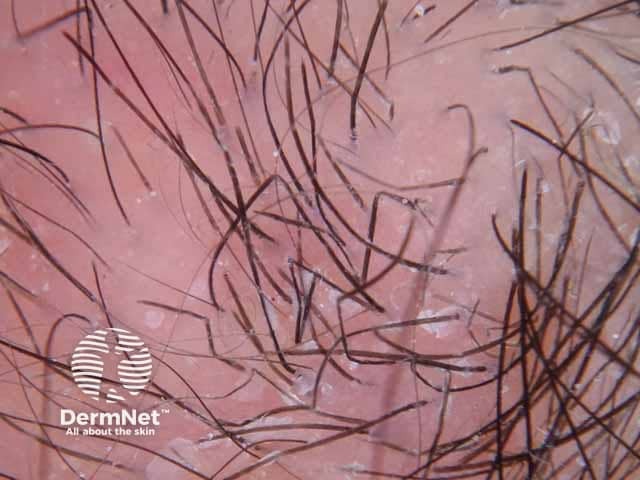
Dermoscopic image of tinea capitis showing zigzag hairs; focal weakening of the hair shaft in a male child
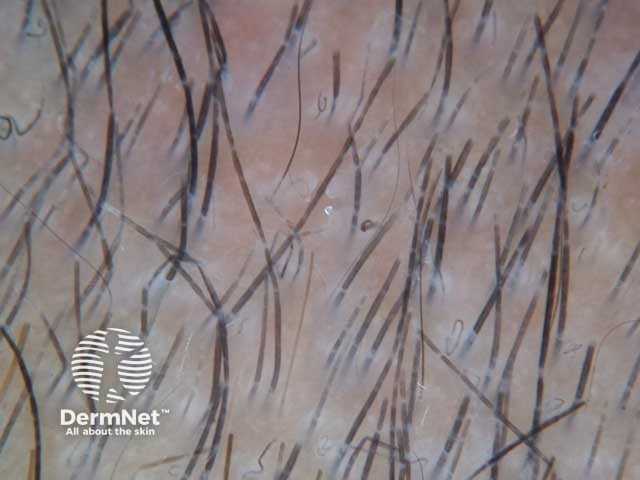
Dermoscopic image of tinea capitis showing morse code–like hair; interrupted hairs with multiple bands along the hair shaft in a female child.
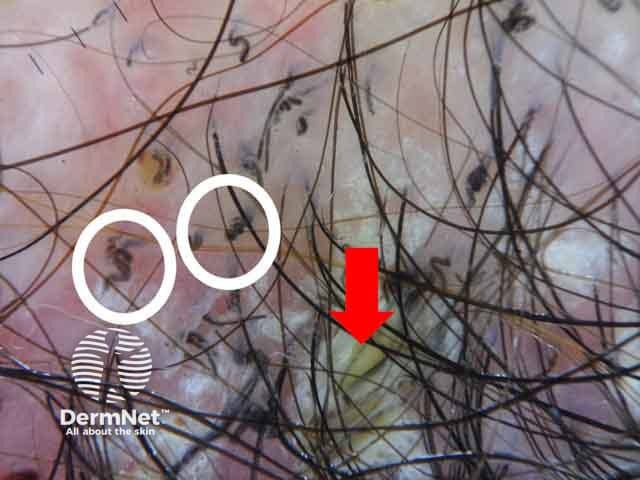
Dermoscopic image of corkscrew hairs (white circles) with yellowish greasy scales (red arrows) denoting tinea capitis. (TC-patient2)
Trichotillomania is a body-focused repetitive behaviour disorder. Sufferers may derive pleasure, gratification, or relief when pulling out their hair. It presents with irregular patches of alopecia, with hairs of variable length commonly affecting the vertex or parietal scalp.
Specific features:

Dermoscopic image of trichotillomania showing flame figures; hair remnants of recently pulled hairs
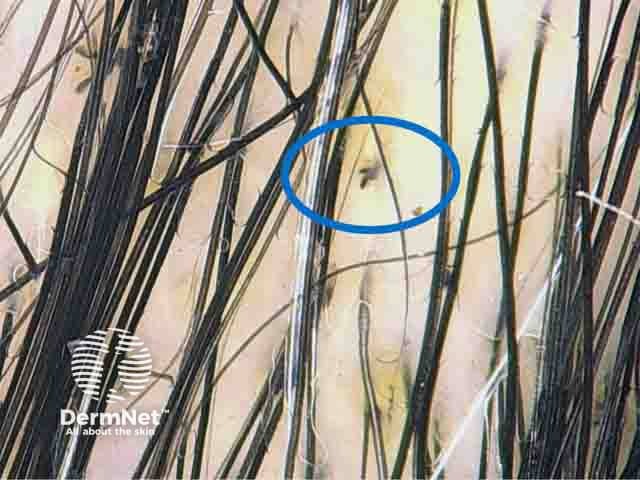
Trichotillomania showing V-sign that represents two hair shafts emerging from the same follicle and cut at the same level

Dermoscopic image showing hair cut at different levels (white arrows), hook hair (black arrows) and flame figures (red arrows) denoting trichotillomania (TTM-patient1)
Other features:
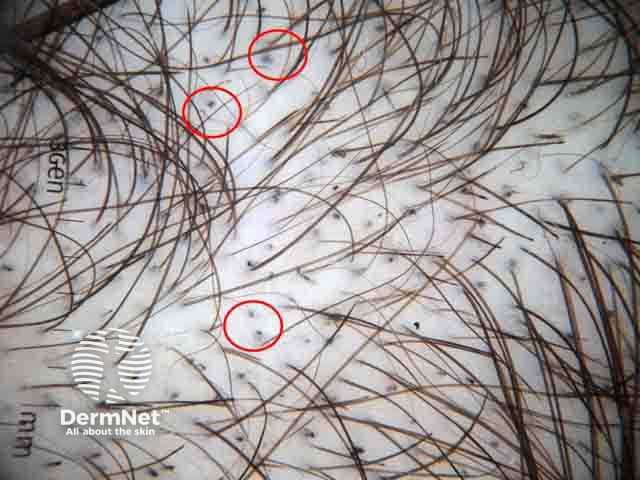
Trichotillomania showing black dots; follicular openings with remnants of pigmented hairs broken at scalp level
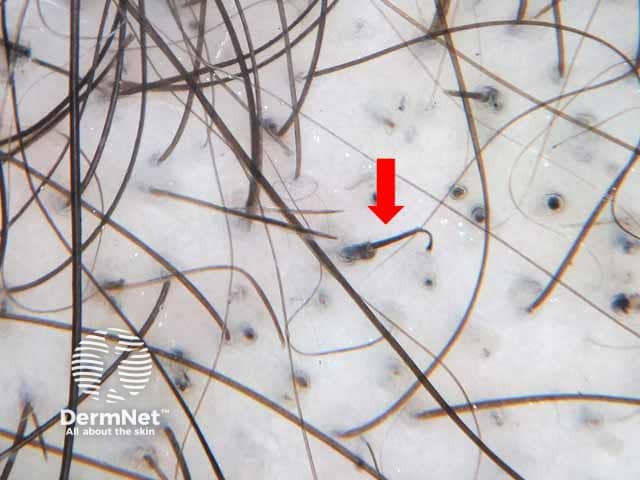
Trichotillomania showing hook hair (red arrow)
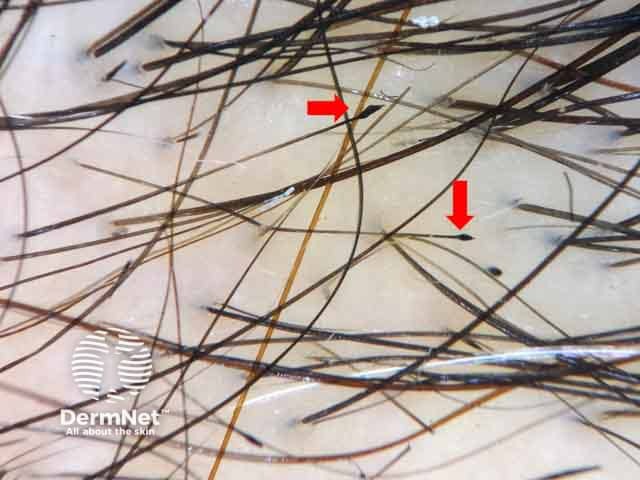
Dermoscopic image of trichotillomania showing tulip hair; hair shaft with darker distal end
Refer to trichoscopy of generalised noncicatricial hair loss for further information on the trichoscopy of tractional alopecia.
Temporal triangular alopecia is a non-scarring, circumscribed alopecia is often located unilaterally in the frontotemporal region during early childhood and remains stationary throughout life.
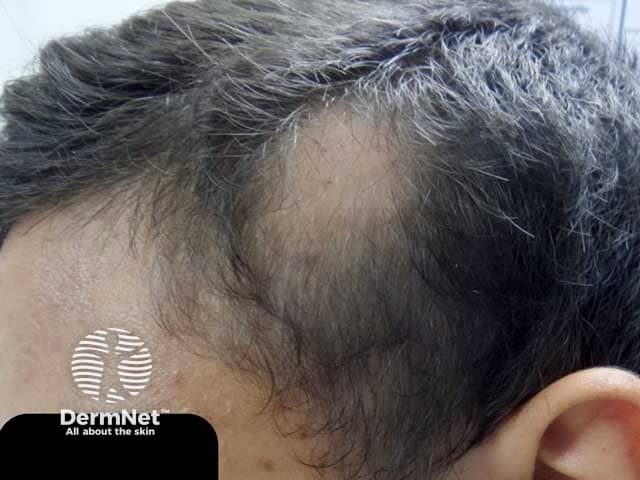
Clinical image of a male patient with patchy hair loss in the temporal area. (TTA-patient1)
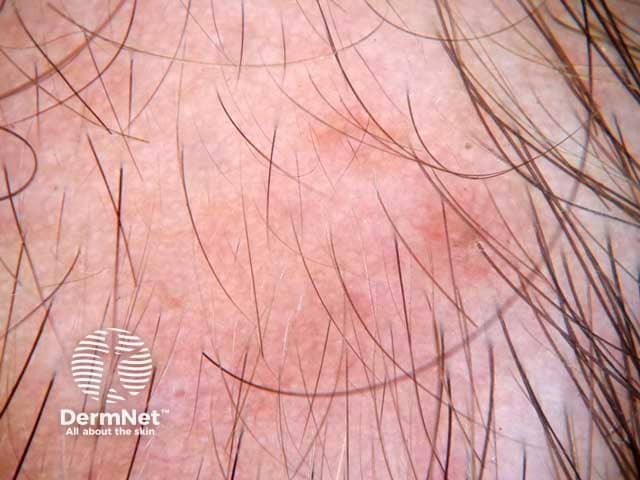
Normal follicular openings with vellus hairs coveirng an area of triangular temporal alopecia. (TTA-patient1)